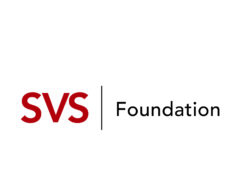
Extracellular vesicles enhance deep vein thrombosis (DVT) via receptor interacting protein kinase-3 (RIPK3), the study that claimed this year’s SVS Foundation Resident Research Award found, raising the suggestion of a causal relationship between necroptosis and hypercoagulative states seen in various diseases.
Mitri Khoury, MD, a general surgery resident at the University of Texas Southwestern in Dallas, will present the findings during the William J. von Liebig Forum—the opening scientific session—on the first day of SVS ONLINE.
Khoury and a team of colleagues had sought to establish how RIPK3 is carried in plasma and whether its presence can enhance thrombus formation. “Receptor interacting protein kinase 3 (RIPK3) is a key mediator of a regulated form of cell death termed necroptosis,” they state. “Recent studies have demonstrated elevated levels of RIPK3 within the plasma of patients with hypercoagulative states. In addition, other mediators of necroptosis have been found to be associated with thrombus formation.”
The fruit of several different projects tackled by Khoury et al in the lab, the study also grew out of his professional curiosity in venous thrombosis, he tells Vascular Connections.
“The project first started when initially we observed this finding that RIPK3 enhances thrombin generation,” he elaborates. “I’ve always had an interest in looking at venous thrombosis. When we noticed this phenomenon, we decided to explore its role in deep vein thrombosis.”
The work was carried out while Khoury was carrying out a National Institutes of Health (NIH)- funded T32 vascular research fellowship at the University of Wisconsin, Madison.
His mentor on the study, Bo Liu, MD, professor of surgery at the University of Wisconsin School of Medicine and Public Health in Madison, highlighted potential new ground broken by Khoury and his colleagues.
“When Mitri joined the lab, he took my interest in cell death, his interest in thrombosis and the graduate students’ interest in extracellular vesicles, put them all together, and came up with the hypothesis and, after many months of hard work, with the findings.
“So, in a sense it’s novel interdisciplinary research. What is most striking for me is that RIPK3’s is a protein kinase known to work inside a cell. Now, Mitri’s work shows it works outside the cell, too. To my knowledge, that’s the first time someone has shown RIPK3’s function in the plasma outside of the blood cells. From a basic science point of view, that is both very interesting and very important.”
Liu goes further. From a disease point of view, she goes on, many trauma and aneurysm patients have a higher tendency to develop thrombosis. “This phenomenon has been known for many years but there are no clear explanations. Mitri’s
findings could provide one potential explanation to these clinical observations. And if what he found is proven to be right, then this protein can be used as a biomarker for clinicians to screen patients with, let’s say, aneurysms, or who suffer trauma or some kind of injury, to predict how likely they may suffer from thrombotic events.”
 Khoury hopes to use the award as a springboard to a career as an academic vascular surgeon: “UT Southwestern gives you the option to do research years so when I decided I wanted to be an academic vascular surgeon, I decided to do research years. I applied to the University of Wisconsin, Madison, T32, and that was a huge opportunity to let me do this project.”
Khoury hopes to use the award as a springboard to a career as an academic vascular surgeon: “UT Southwestern gives you the option to do research years so when I decided I wanted to be an academic vascular surgeon, I decided to do research years. I applied to the University of Wisconsin, Madison, T32, and that was a huge opportunity to let me do this project.”
Liu identified Khoury as a future so-called triple threat—those clinicians marked out as excellent doctors, scientists and administrators. She also highlighted the triumph the award represents for the T32 program, which she co-directs. “This NIH funding mechanism supports institutions to conduct training activities like the one we have. To my knowledge, there are only nine instances of such training funding given for vascular surgery.
“We hope it means surgeon-scientists like Mitri—who are provided not only with funding for a stipend, but a research environment, a training environment—are given the foundation so that when they one day have their own labs, they have learned how to design experiments, how to conduct experiments, how to apply for funding.”
The Resident Research Award only compounds the impact of the T32 training mechanism, Liu adds. As for Khoury, the award marks a milestone he has had signposted since he was an intern. “Hopefully, I get to the point where Dr. Liu is at.”
WHEN: Saturday, June 20, 2020,11:52 a.m.–12:02 p.m. von Liebig Forum











